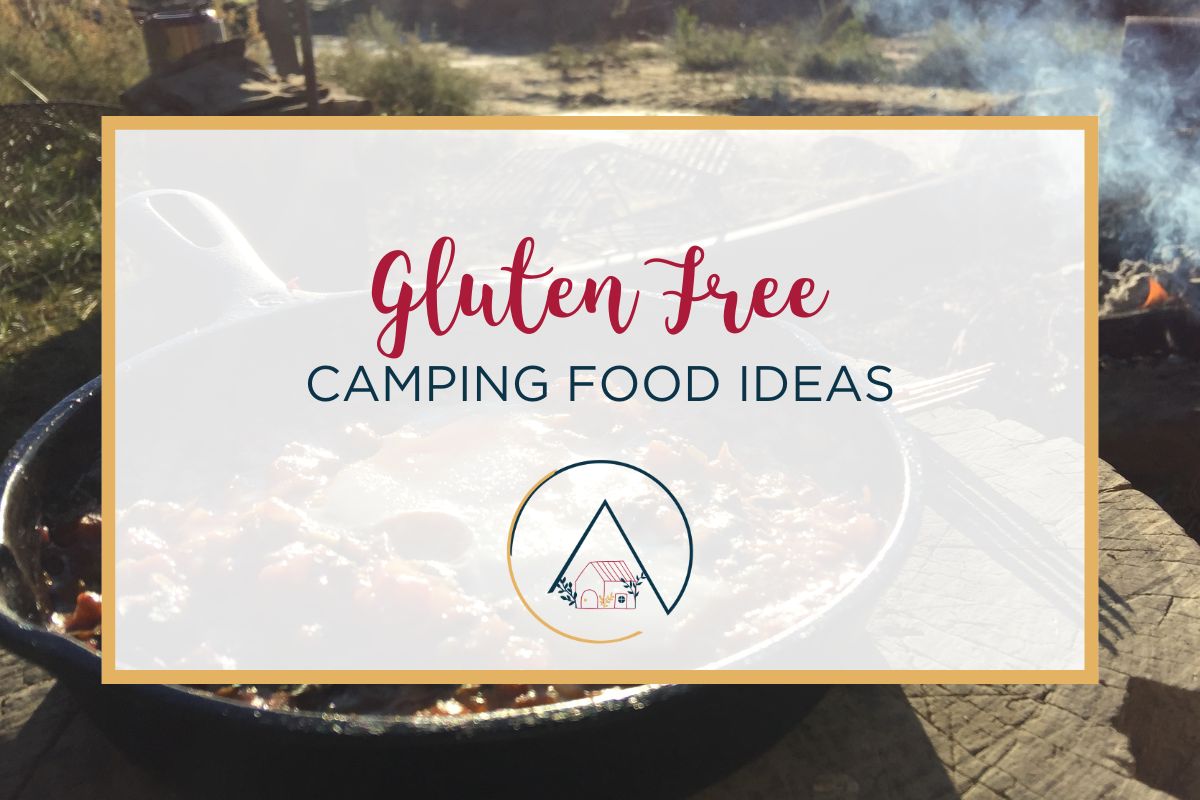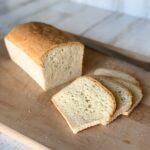Picture this: you’re miles from civilization, surrounded by breathtaking scenery, the scent of pine needles sharp in the crisp air. But the rumbling in your stomach isn’t the satisfying growl of adventure; it’s the gnawing hunger of a gluten-intolerant camper. Fear not! This guide unveils the secrets to crafting delicious, nutritious, and entirely gluten-free snacks perfect for your next camping expedition. We’ll navigate the planning stages, delve into mouthwatering recipes for trail mix and energy bars, and equip you with the know-how to pack and preserve your culinary creations, ensuring every bite is as satisfying as the view.
From selecting shelf-stable ingredients to mastering the art of gluten-free baking for the outdoors, we’ll cover everything you need to know. We’ll explore nutritional comparisons between gluten-free and gluten-containing options, ensuring your snacks are not only delicious but also provide the sustained energy you need for hiking, fishing, or simply relaxing by the campfire. Get ready to transform your camping meals into a flavorful adventure, free from gluten and brimming with satisfaction.
Gluten-Free Energy Bars for the Trail
These homemade gluten-free energy bars are designed to provide sustained energy during your camping adventures, using ingredients that are both nutritious and easy to pack. They are adaptable to various dietary needs, making them a versatile option for a wide range of outdoor enthusiasts. The recipe below provides a base that can be customized to suit your preferences.
Homemade Gluten-Free Energy Bar Recipe
This recipe yields approximately 12 energy bars. The vibrant colors and textures of the ingredients create a visually appealing and delicious snack perfect for fueling your outdoor activities. Imagine biting into a bar where the deep brown of the dates contrasts beautifully with the golden hues of the oats and the speckled appearance of the seeds.
- Dry Ingredients: In a large bowl, combine 1 cup gluten-free rolled oats (certified gluten-free), ½ cup sunflower seeds, ¼ cup pumpkin seeds, ¼ cup shredded coconut (unsweetened), and a pinch of sea salt. The oats provide a substantial base, while the seeds contribute healthy fats and protein for sustained energy. The coconut adds a touch of sweetness and texture.
- Wet Ingredients: In a separate bowl, combine 1 cup pitted Medjool dates (packed), ¼ cup nut butter (peanut butter, almond butter, or sunflower seed butter), 2 tablespoons maple syrup, and 1 tablespoon of water. The dates offer natural sweetness and fiber. The nut butter adds creaminess and healthy fats, while the maple syrup provides additional binding and sweetness. Water helps to create a smooth paste.
- Combining Ingredients: Add the wet ingredients to the dry ingredients and mix thoroughly until everything is well combined. The mixture should be moist and slightly sticky. The rich, dark color of the dates blends beautifully with the lighter colors of the other ingredients, creating a visually appealing mix.
- Pressing and Setting: Line an 8×8 inch baking dish with parchment paper. Press the mixture firmly into the dish, ensuring an even layer. The resulting bar is a dense, rich, and visually satisfying snack.
- Chilling and Cutting: Refrigerate the bars for at least 30 minutes to allow them to firm up. Once chilled, cut into 12 equal bars. The bars should have a firm, yet slightly chewy texture, perfect for easy packing and consumption on the trail.
Adapting the Recipe for Dietary Restrictions
This recipe is easily adaptable to accommodate various dietary needs.
- Vegan: This recipe is already vegan, as it doesn’t contain any animal products.
- Nut-Free: Substitute the nut butter with sunflower seed butter or tahini for a nut-free option. The creamy texture and subtle flavor of sunflower seed butter or the slightly nutty and earthy flavor of tahini provide a suitable replacement.
- Seed-Free: While less common, you could potentially replace the seeds with additional oats or dried fruit, but the nutritional profile would be altered. Dried cranberries or chopped apricots would add sweetness and moisture.
Nutritional Comparison: Homemade vs. Commercial Gluten-Free Energy Bars
Homemade gluten-free energy bars generally offer a more controlled nutritional profile compared to commercially available options. Commercial bars often contain added sugars, preservatives, and artificial ingredients. Homemade bars allow you to select high-quality, whole-food ingredients, resulting in a more nutritious and less processed snack. For example, a homemade bar might contain significantly less added sugar and more fiber than a commercially produced counterpart. However, the precise nutritional values will vary depending on the specific ingredients used in both homemade and commercial versions. Always check nutrition labels for accurate information.
Preparing Gluten-Free Snacks Ahead of Time

Planning ahead is crucial for a successful and enjoyable gluten-free camping trip. Preparing your snacks in advance eliminates last-minute stress and ensures you have delicious, safe options readily available throughout your adventure. This proactive approach minimizes the risk of accidental gluten ingestion and allows you to focus on enjoying the great outdoors.
One-Week Gluten-Free Snack Preparation Schedule
A detailed schedule ensures everything is ready on time. This sample schedule assumes your camping trip begins on a Saturday. Adjust it to fit your specific needs and trip length.
- Sunday: Begin by creating your shopping list. Purchase all necessary ingredients for your chosen gluten-free snacks. This includes gluten-free crackers, trail mix ingredients, dried fruit, etc. Consider making a large batch of gluten-free granola or energy bites.
- Monday: Prepare your gluten-free granola or energy bites. Allow ample time for these to set and firm up in the refrigerator.
- Tuesday: Make any homemade gluten-free snack bars. This could involve baking or assembling no-bake options. Package them individually for easy portability.
- Wednesday: Assemble your trail mix. Combine nuts, seeds, dried fruit, and gluten-free chocolate chips (if desired) in airtight containers.
- Thursday: Prepare any other snacks like gluten-free crackers and cheese, or vegetable sticks with hummus. Ensure these are packaged appropriately for camping.
- Friday: Check your packing list and organize all snacks into reusable containers or zip-top bags. Label each container clearly to avoid confusion.
- Saturday: Pack your snacks into your cooler or backpack, ensuring they are properly sealed and protected from the elements.
Gluten-Free Snack Preparation Checklist
A comprehensive checklist minimizes the risk of forgetting essential items.
- Ingredients: Gluten-free oats, nuts (almonds, cashews, walnuts), seeds (sunflower, pumpkin), dried fruit (cranberries, raisins, apricots), gluten-free chocolate chips, coconut flakes, nut butter, honey or maple syrup, gluten-free crackers, cheese, vegetables (carrots, celery), hummus, spices.
- Equipment: Measuring cups and spoons, mixing bowls, baking sheets, oven, food processor (optional), airtight containers, reusable zip-top bags, cooler bag or backpack.
- Other: Shopping list, recipe printouts, labels for containers, pens or markers.
Potential Challenges and Solutions
Preparing gluten-free snacks can present unique challenges.
- Cross-contamination: To prevent cross-contamination, use separate cutting boards and utensils for gluten-free ingredients. Thoroughly clean all surfaces before and after preparing gluten-free snacks. Avoid using the same equipment used for gluten-containing foods.
- Ingredient availability: Gluten-free ingredients may be more expensive or less readily available than their gluten-containing counterparts. Planning ahead and ordering online can mitigate this issue. Consider buying in bulk when possible.
- Storage and shelf life: Properly storing gluten-free snacks is crucial. Airtight containers help maintain freshness and prevent spoilage. Be mindful of the shelf life of your chosen ingredients and plan accordingly.
- Taste and texture: Some gluten-free products may not have the same taste or texture as their gluten-containing counterparts. Experiment with different recipes and brands to find options you enjoy. Don’t be afraid to get creative and adapt recipes to your preferences.
Embarking on a gluten-free camping adventure no longer needs to feel restrictive. With careful planning, creative recipe adaptations, and the right packing strategies, you can enjoy delicious and nutritious snacks throughout your trip. Remember the key is preparation: crafting your snacks ahead of time allows for careful ingredient selection, portion control, and ensures you’re ready for any culinary challenge the wilderness might throw your way. So, pack your bags, gather your ingredients, and get ready to savor every moment – and every bite – of your next gluten-free camping escapade.
Q&A
Can I use pre-made gluten-free mixes for my snacks?
Absolutely! Many pre-made mixes are available, simplifying the process. Always check labels carefully to ensure they meet your dietary needs and are suitable for outdoor storage.
How do I keep my snacks fresh in hot weather?
Use airtight containers and consider using ice packs in your cooler, especially for perishable items like homemade energy bars. Choose snacks that are naturally shelf-stable where possible.
What if I have other dietary restrictions besides gluten-free?
Many of the recipes can be adapted to accommodate other restrictions, such as vegan or nut-free diets. Be mindful of ingredient substitutions and always double-check labels.
What’s the best way to transport fragile snacks?
Use sturdy containers and pack them carefully in your backpack or cooler, cushioning them with other items to prevent breakage. Avoid stacking heavy items on top of delicate snacks.


